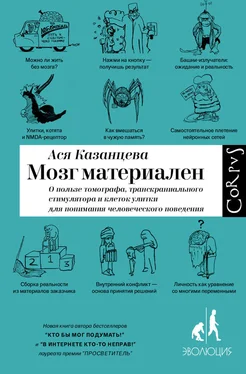Lebel, C. & Beaulieu, C. (2011). Longitudinal development of human brain wiring continues from childhood into adulthood. The Journal of Neuroscience , 31 (30), 10937–10947.
Salthouse, T. A. (2009). When does age-related cognitive decline begin? Neurobiology of Aging , 30 (4), 507–514.
De Beni, R. et al. (2007). Reading comprehension in aging: the role of working memory and metacomprehension. Aging, Neuropsychology and Cognition , 14, 189–212.
Rose, M. R. et al. (2002). Evolution of late-life mortality in Drosophila melanogaster. Evolution , 56 (10), 1982–1991.
Burke, S. N. & Barnes, C. A. (2006). Neural plasticity in the ageing brain. Nature Reviews Neuroscience , 7, 30–40.
Wyss-Coray, T. (2016). Ageing, neurodegeneration and brain rejuvenation. Nature , 539 (7628), 180–186.
Draganski, B. et al. (2004). Changes in grey matter induced by training. Nature, 427, 311–312.
Boyke, J. et al. (2008). Training-induced brain structure changes in the elderly. The Journal of Neuroscience , 28 (28), 7031–7035.
Тут настало время пояснить, что в мозге бывает серое и белое вещество. Белое – это проводящие пути, покрытые изоляцией из миелина. Серое – это тела нервных клеток, а также те их отростки, которые обходятся без миелинового покрытия.
Eriksson, P. S. et al. (1998). Neurogenesis in the adult human hippocampus. Nature Medicine , 4 (11), 1313–1317.
Spalding, K. L. et al. (2013). Dynamics of hippocampal neurogenesis in adult humans. Cell , 153 (6), 1219–1227.
Sorrells, S. F. et al. (2018). Human hippocampal neurogenesis drops sharply in children to undetectable levels in adults. Nature , 555 (7696), 377–381.
Boldrini, M. et al. (2018). Human hippocampal neurogenesis persists throughout ageing. Cell Stem Cell , 22 (4), 589–599.
Roe, C. M. et al. (2007). Education and Alzheimer disease without dementia: support for the cognitive reserve hypothesis. Neurology , 68 (3), 223–228.
Amieva, H. et al. (2014). Compensatory mechanisms in higher-educated subjects with Alzheimer’s disease: a study of 20 years of cognitive decline. Brain , 137 (4), 1167–1175.
Schweizer, T. A. et al. (2012). Bilingualism as a contributor to cognitive reserve: evidence from brain atrophy in Alzheimer’s disease. Cortex , 48, 991–996.
Thow, M. E. et al. (2018). Further education improves cognitive reserve and triggers improvement in selective cognitive functions in older adults: the Tasmanian Healthy Brain Project. Alzheimer’s & Dementia: Diagnosis, Assessment & Disease Monitoring , 10, 22–30.
Разумеется, работа и размножение тоже способствуют росту новых нейронных связей. Но, по‐видимому, хороший и сложный университет для этого эффективнее.
Rechtschaffen, A. et al. (1989). Sleep deprivation in the rat: X. Integration and discussion of the findings. Sleep , 12 (1), 68–87.
Everson, C. A. (1993). Sustained sleep deprivation impairs host defense. American Journal of Physiology , 265 (5 Pt 2), R1148–1154.
Everson, C. A. & Toth, L. A. (2000). Systemic bacterial invasion induced by sleep deprivation. American Journal of Physiology: Regulatory, Integrative and Comparative Physiology , 278 (4), R905–916.
Rechtschaffen, A. & Bergmann, B. M. (2002). Sleep deprivation in the rat: an update of the 1989 paper. Sleep , 25 (1), 18–24.
Krueger, J. M. et al. (2016). Sleep function: toward elucidating an enigma. Sleep Medicine Reviews , 28, 46–54.
Cirelli, C. & Tononi, G. (2008). Is sleep essential? PLOS Biology , 6 (8), e216.
Krueger, J. M. et al. (2016). Sleep function: toward elucidating an enigma. Sleep Medicine Reviews , 28, 46–54.
Kim, T. W. et al. (2015). The impact of sleep and circadian disturbance on hormones and metabolism. International Journal of Endocrinology , 2015, 591729.
Гликоген – это углевод вроде крахмала, его можно быстро расщепить на отдельные молекулы глюкозы. Глиальные клетки, или глия, – это клетки-няньки, которые заботятся о нейронах. Созвучие между гликогеном и глией случайное.
Rasch, B. & Born, J. (2013). About sleep’s role in memory. Physiological Reviews , 93 (2), 681–766.
Payne, J. D. et al. (2012). Memory for semantically related and unrelated declarative information: the benefit of sleep, the cost of wake. PLOS One , 7 (3), e33079.
Talamini, L. M. et al. (2008). Sleep directly following learning benefits consolidation of spatial associative memory. Learning & Memory , 15 (4), 233–237.
Nishida, M. & Walker, M. P. (2007). Daytime naps, motor memory consolidation and regionally specific sleep spindles. PLOS One , 2 (4), e341.
Carskadon, M. A. et al. (1998). Adolescent sleep patterns, circadian timing, and sleepiness at a transition to early school days. Sleep , 21 (8), 871–881.
Shapiro, T. (2015). The educational effects of school start times. IZA World of Labor , 181.
Edwards, F. (2012). Early to rise? The effect of daily start times on academic performance. Economics of Education Review , 31, 970–983.
Saxvig, I. W. et al. (2012). Prevalence and correlates of delayed sleep phase in high school students. Sleep Medicine , 13 (2), 193–199.
Yang, G. et al. (2014). Sleep promotes branch-specific formation of dendritic spines after learning. Science , 344 (6188), 1173–1178.
De Vivo, L. et al. (2017). Ultrastructural evidence for synaptic scaling across the wake/sleep cycle. Science , 355 (6324), 507–510.
Basso, J. C. et al. (2015). Acute exercise improves prefrontal cortex but not hippocampal function in healthy adults. Journal of the International Neurophysiological Society , 21, 791–801.
Wen, C. P. et al. (2011). Minimum amount of physical activity for reduced mortality and extended life expectancy: a prospective cohort study. Lancet , 378 (9798), 1244–1253.
Читать дальше
Конец ознакомительного отрывка
Купить книгу











